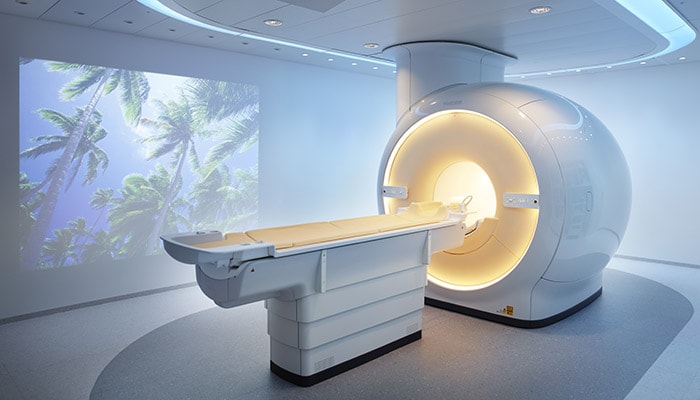The MRI in-bore experience is a minimally invasive, yet profoundly unfamiliar process for many patients. This diagnostic procedure, predominantly utilized for assessing intricate bodily structures, harbors an array of sensations and perceptions that merit careful exploration. By elucidating the expectations and subtleties of the MRI in-bore experience, patients can better navigate this potentially intimidating environment, fostering a sense of empowerment and assurance.
Firstly, it is important to preface the discussion with a fundamental understanding of what an MRI entails. Magnetic Resonance Imaging employs a magnetic field and radio waves to generate detailed images of organs and tissues within the body. The machinery, although advanced and effective, can evoke numerous psychological and physical responses, fundamentally intertwined with the in-bore experience.
The initial encounter with the MRI machine is often striking. The machine resembles a large cylindrical tube—clinical and imposing. Upon arrival, patients will typically be greeted by medical professionals who provide reassurance while guiding them through the procedural logistics. This initial interaction serves as a foundational layer of psychological comfort, which is crucial for mitigating anxieties associated with enclosed spaces, known as claustrophobia.
Patients should anticipate that their journey will commence with preparatory procedures. This phase may include changing into a hospital gown, which leads to a spatial dislocation—the sensation of the room shrinking, emphasizing the forthcoming envelopment in the MRI bore. Patients can expect to feel a sense of vulnerability, exacerbated by the need for immobilization during the imaging process. Yet, it is this very immobility that enables the acquisition of superior imaging quality, thereby informing an accurate diagnosis.
Moreover, patients will likely experience auditory stimuli that accompany the MRI procedure. The machine generates distinctive sounds: loud thumps, vibrations, and rhythmic pulsations as the imaging takes place. Despite these sounds being standardized within the imaging process, their intensity can be disconcerting for many. Herein lies a significant aspect of the in-bore experience—anticipatory anxiety related to these noises. Medical staff often mitigate this by offering earplugs or headphones, playing soothing music to foster a serene atmosphere. Such measures serve to not only shield the auditory senses but to also engender a calming environment that diminishes the seeming chaos of the machine.
As the imaging process commences, patients may find themselves enveloped in the MRI bore, leading to an unpredictable amalgamation of sensations. The feeling of confinement can, at times, trigger distress. Nevertheless, it is crucial to highlight the measures in place to address such discomfort. Most facilities offer an intercom system, enabling real-time communication between the patient and the technologist. This technological reassurance is vital in alleviating the psychological burden and engendering a sense of agency within the process.
Once situated within the bore, patients may also experience a notable shift in perceptions. The temperature can fluctuate within the machine’s confines, leading to sensations of warmth or coolness that vary among individuals. This experience may feel peculiar but is generally harmless, reflecting the operational mechanics of the MRI technology. Moreover, the alterations in light perception may also arise, where the dimness within the bore accentuates an introspective state. This unique environment can prompt reflections on one’s mental state, often unveiling a surprising clarity or tranquility amidst the clinical surroundings.
An important aspect of the in-bore experience is the duration of the imaging process, which may extend from several minutes to upwards of an hour, depending on the complexity of the images required. Patients must brace themselves for this temporal commitment. Time may seem to stretch as they lie still, finally preparing for introspection amid the whirring of machinery. This anticipation of duration can lead to a multitude of existential contemplations, fostering a transformative shift in perspective regarding medical experiences in general.
Post-procedure, patients are met with the comforting knowledge that the process is often much less harrowing than initially conceived. The MRI, upon completion, grants each individual the opportunity to rise from the confines of the machine, reintegrating into the external world with a profound awareness of their own resilience. The subsequent review of the images captured during the process can yield crucial diagnostic insights, representing the culmination of this unique experience in a tangible medical outcome.
In summary, while the MRI in-bore experience might conjure a complex tapestry of concerns and distractions, it ultimately serves as an opportunity for introspection, self-awareness, and healing. The meticulous orchestration of the pre-procedural preparation, the attention to auditory distractions, and the channeling of personal agency through communication all contribute to a paradigm shift in how patients may perceive medical imaging. The journey through the magnetic confines not only clarifies physical ailments but can also unveil nuanced layers of psychological strength and resilience that can resonate long beyond the confines of the MRI bore.












